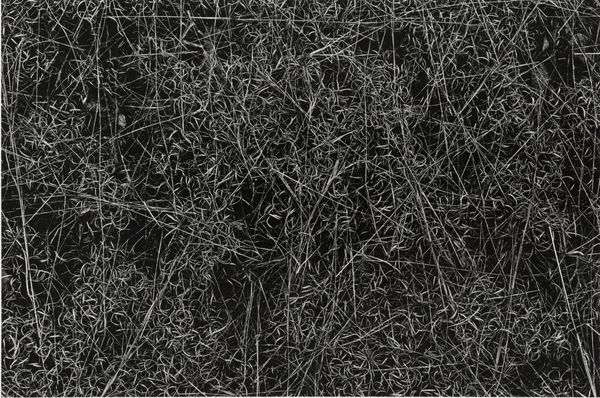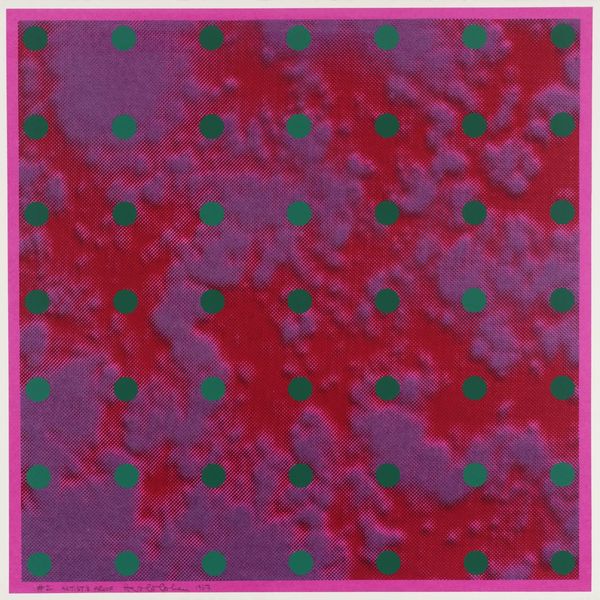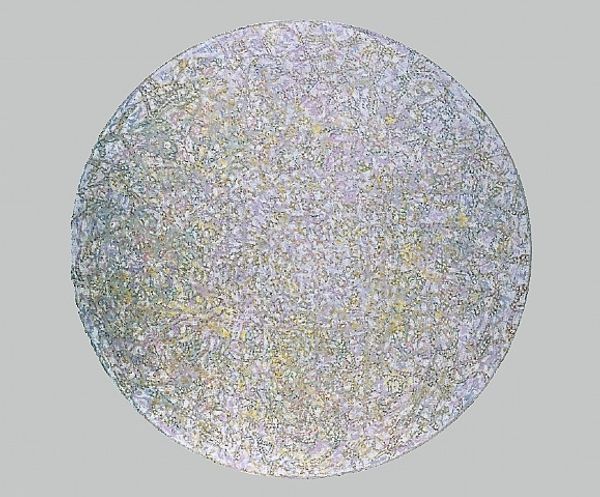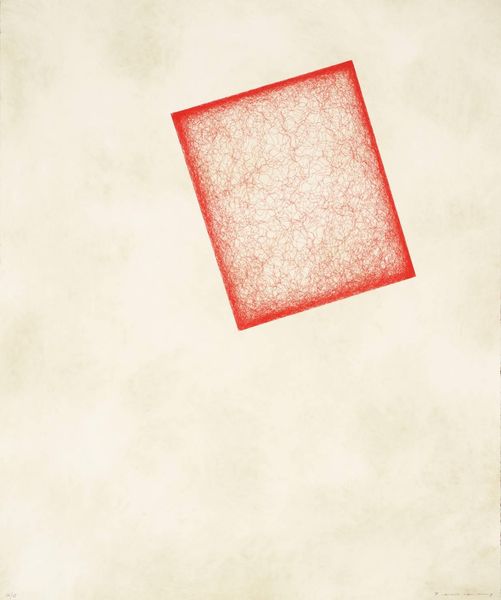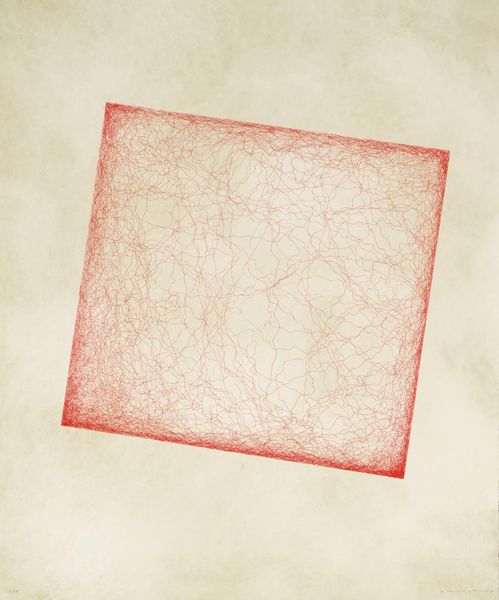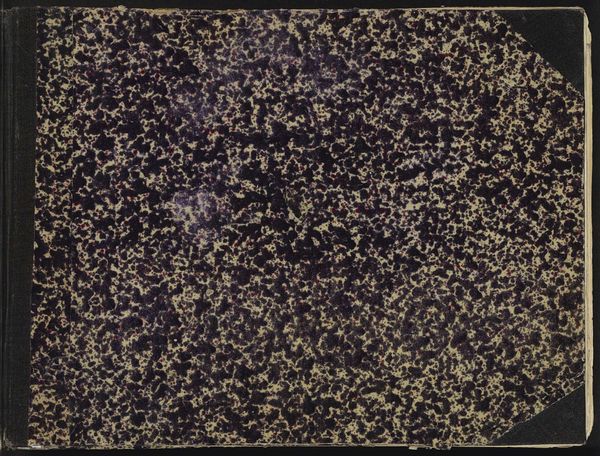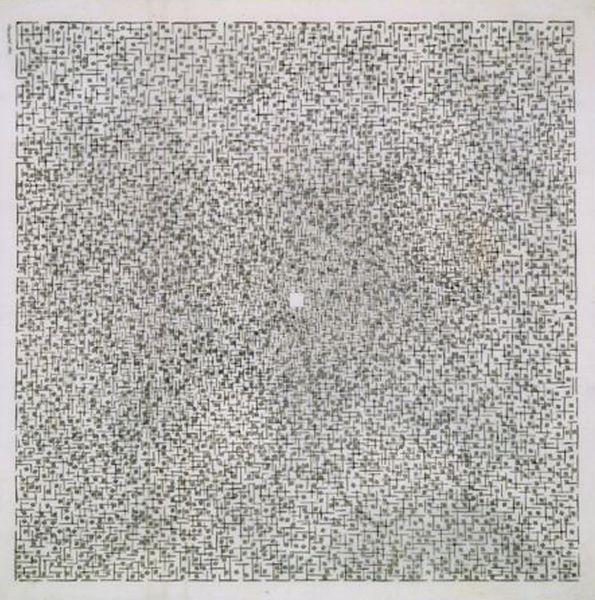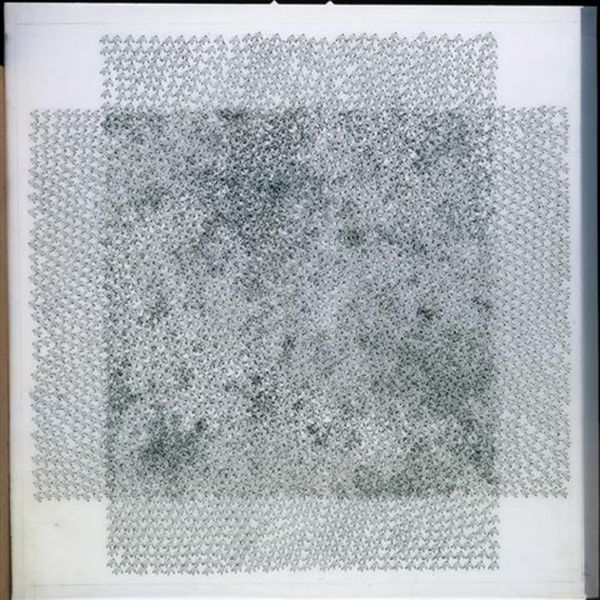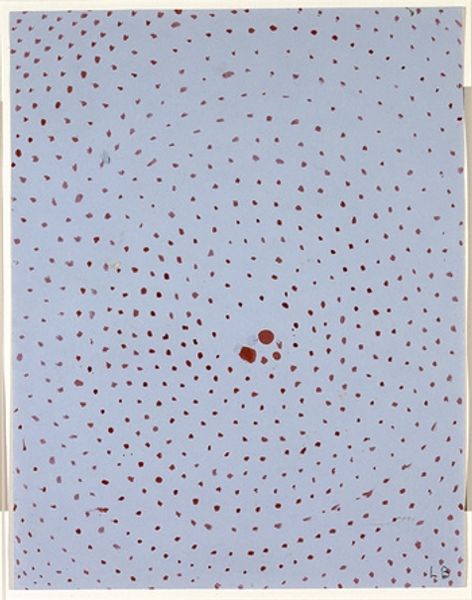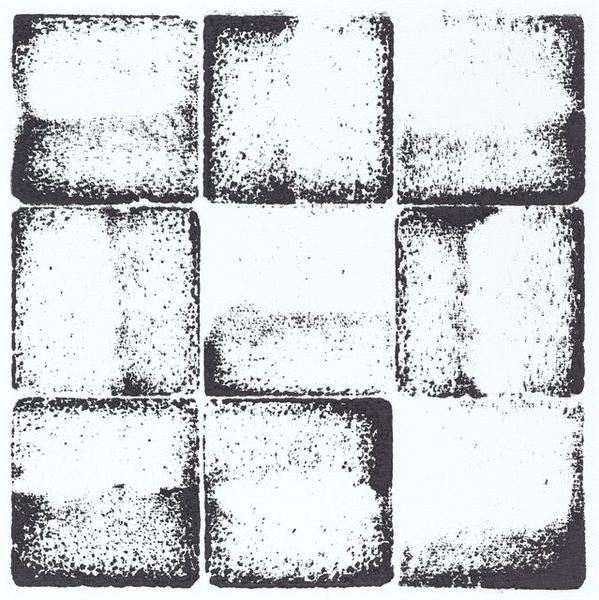
print, graphite
#
conceptual-art
# print
#
geometric
#
abstraction
#
graphite
#
monochrome
Dimensions: sheet: 57.94 × 48.26 cm (22 13/16 × 19 in.)
Copyright: National Gallery of Art: CC0 1.0
Curator: This piece, "Standfache I," dates to 1988 and is the work of Frank Gerritz. Executed with graphite on paper, it represents the artist's ongoing investigation of minimalist geometric forms. Editor: My immediate impression is one of restrained intensity. The monochrome palette amplifies the focus on texture and form; the small, almost imperceptible square floats, challenging the density around it. Curator: Indeed, the composition invites contemplation on the subtle play between figure and ground, a visual dialogue found across the late twentieth-century conceptual art. We should note that Gerrit’s practice gained prominence during a period when the established artistic canon was being critiqued for its perceived exclusivity and its role within the existing power structures. Editor: That small, centrally-placed dark square acts as an anchor amid what feels like a random scattering of particles. It’s curious how such minimal means evoke such a potent, almost oppressive density. There are nuances here, the light isn’t distributed evenly which makes the density gradient interesting as well as somewhat dramatic, as a stage play of lights. Curator: This recalls how post-war art frequently engaged with the anxiety and uncertainty that followed major socio-political disruptions, particularly the rise of totalitarian regimes. Minimalism provided a formal vocabulary for this by often expressing what language couldn’t. Editor: In looking closely, I am starting to appreciate the delicate precision evident within what might appear at first as randomness. The subtle gradations of tone surrounding that central dark shape become particularly evocative. Curator: Gerritz challenges us to look past initial perceptions and invites a deeper investigation into the role that form plays in influencing how meaning can be communicated to an audience and the institutions which display these concepts. Editor: I now read it as a metaphor, the singularity versus multiplicity or perhaps even absence versus presence— the central, contained density as a singular element, amid the random array of form, the larger context to the dark mass floating. It truly is an intricate piece of monochrome geometry. Curator: Exactly. We've witnessed how art may invite contemplation on the deeper structures of culture and its relationship with art history. Editor: This offers, for me, a fascinating visual puzzle expressed via tonal subtleties and an unexpectedly elegant execution, despite initial appearances.
Comments
No comments
Be the first to comment and join the conversation on the ultimate creative platform.

